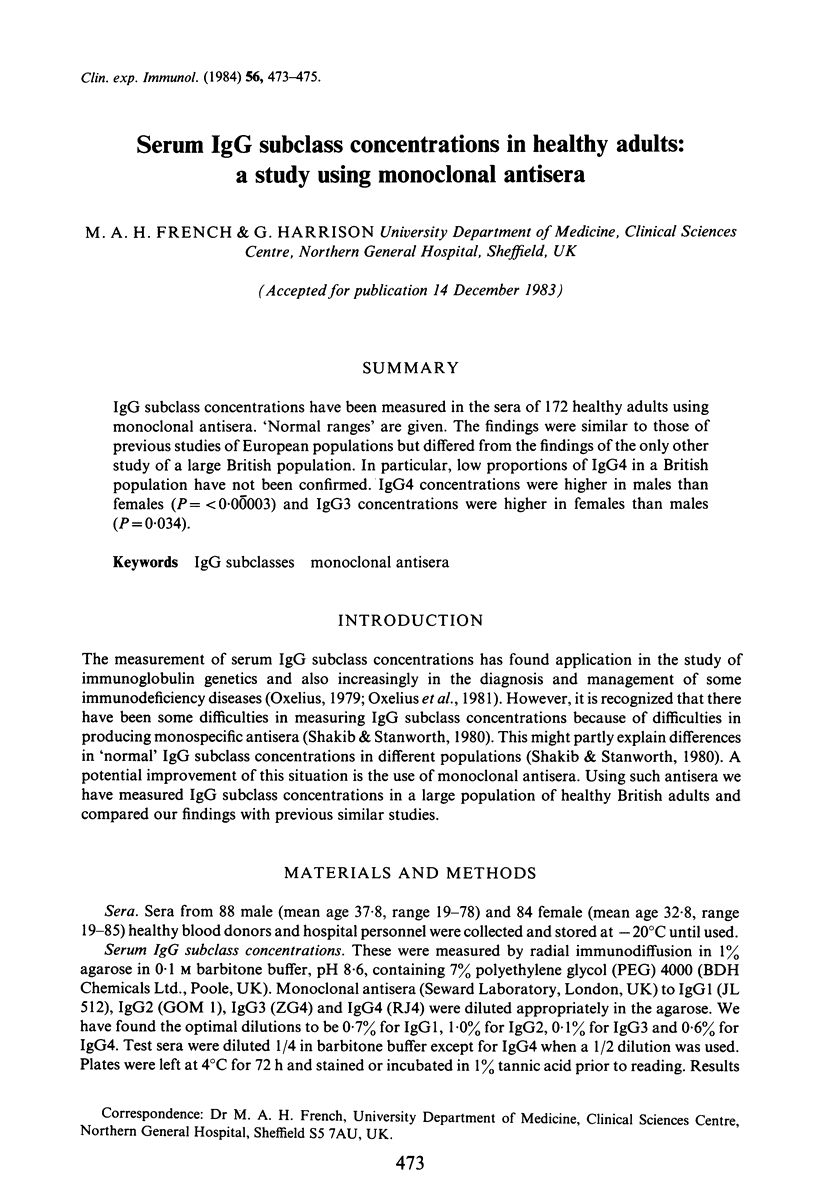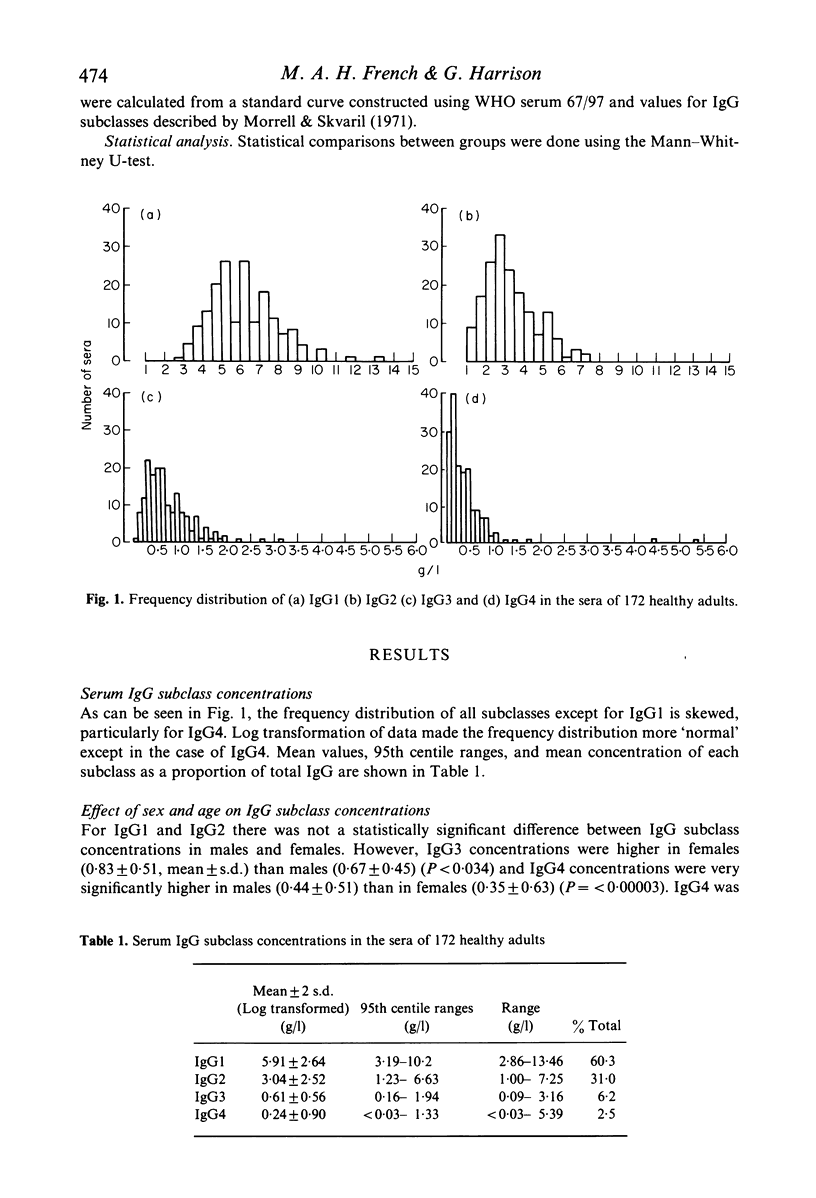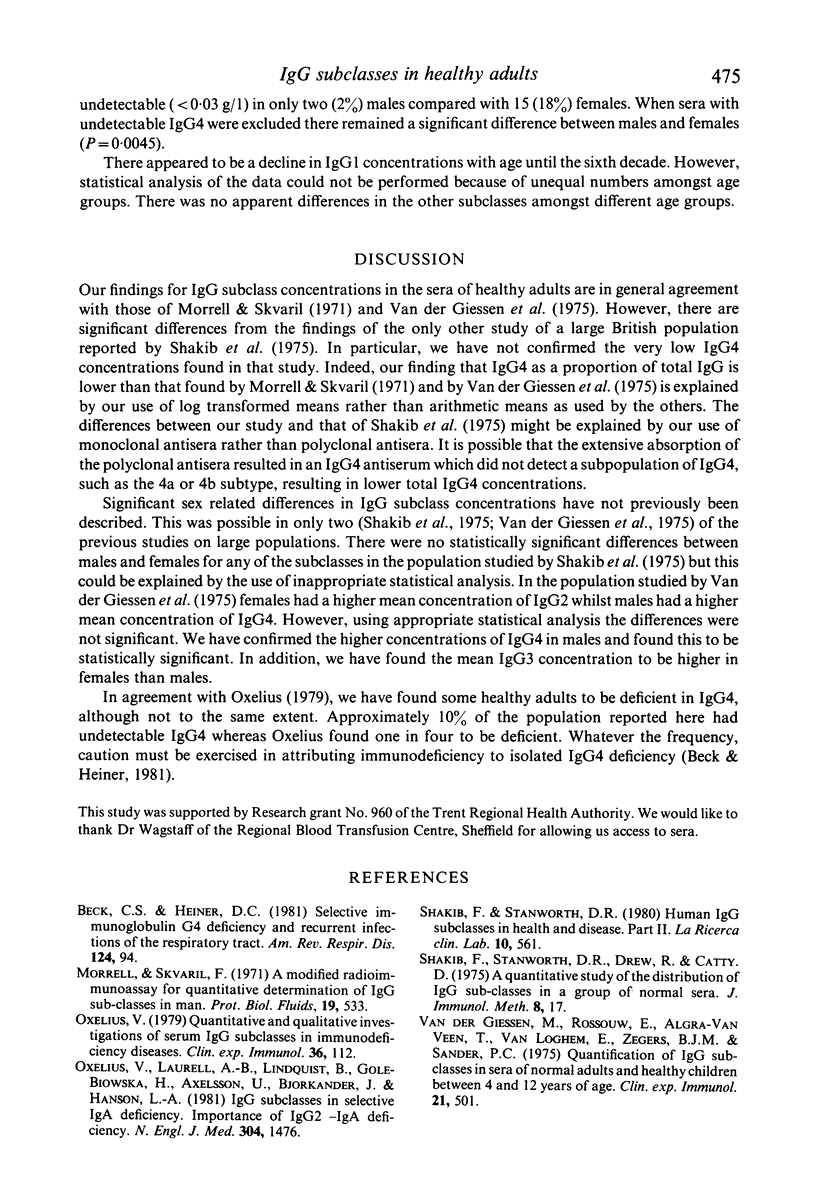Abstract
IgG subclass concentrations have been measured in the sera of 172 healthy adults using monoclonal antisera. 'Normal ranges' are given. The findings were similar to those of previous studies of European populations but differed from the findings of the only other study of a large British population. In particular, low proportions of IgG4 in a British population have not been confirmed. IgG4 concentrations were higher in males than females (P = less than 0.00003) and IgG3 concentrations were higher in females than males (P = 0.034).
Full text
PDF


Selected References
These references are in PubMed. This may not be the complete list of references from this article.
- Beck C. S., Heiner D. C. Selective immunoglobulin G4 deficiency and recurrent infections of the respiratory tract. Am Rev Respir Dis. 1981 Jul;124(1):94–96. doi: 10.1164/arrd.1981.124.1.94. [DOI] [PubMed] [Google Scholar]
- Oxelius V. A., Laurell A. B., Lindquist B., Golebiowska H., Axelsson U., Björkander J., Hanson L. A. IgG subclasses in selective IgA deficiency: importance of IgG2-IgA deficiency. N Engl J Med. 1981 Jun 11;304(24):1476–1477. doi: 10.1056/NEJM198106113042408. [DOI] [PubMed] [Google Scholar]
- Oxelius V. A. Quantitative and qualitative investigations of serum IgG subclasses in immunodeficiency diseases. Clin Exp Immunol. 1979 Apr;36(1):112–116. [PMC free article] [PubMed] [Google Scholar]
- Shakib F., Stanworth D. R. Human IgG subclasses in health and disease. (A review). Part II. Ric Clin Lab. 1980 Oct-Dec;10(4):561–580. doi: 10.1007/BF02906696. [DOI] [PubMed] [Google Scholar]
- van der Giessen M., Rossouw E., van Veen T. A., van Loghem E., Zegers B. J., Sander P. C. Quantification of IgG subclasses in sera of normal adults and healthy children between 4 and 12 years of age. Clin Exp Immunol. 1975 Sep;21(3):501–509. [PMC free article] [PubMed] [Google Scholar]


